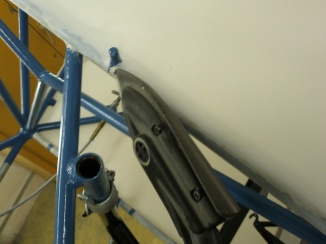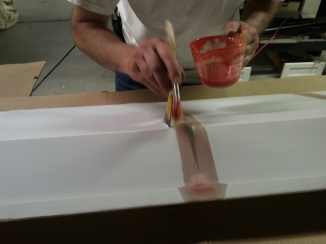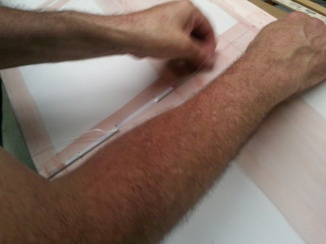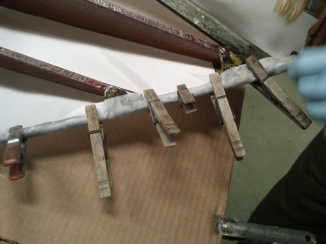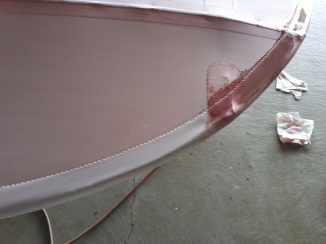
Here we are taping the final tape that goes around the tip of the wing. It is a curved edge so it can be a bit of a challenge. We use a cross cut piece of tape, that means it can stretch around the edge of the wing. It takes up all the slack so you don’t see wrinkles where there would normally be extra tape. We first line up the tape and use clothes pins to hold it into place. Taking Poly-brush we tack the first few inches to have a good starting point and going 6 to 8 inches at a time we lay the tape down setting it in place. This can be a trick to get it looking straight or curved evenly around the edge. In the summer Poly-brush dries very quickly so we have to work quite fast to get all the tape on evenly. You get a few bubbles where the steel tubing structure is attached to the wood structure, we will take an iron later to shrink these out. Hopefully after a few coats of silver all the little bumps and ripples will be hidden and smooth.
A few weeks ago I had a chance to go to Oshkosh and see a lot of fabric covered aircraft. It really makes a difference on how much time you spend on the fabric during the prep time. There were some beautiful aircraft there, with nice seams and edges all ironed out. There were also some that are a great example of a rushed job, still flyable but of a lower quality and higher drag. Hopefully we can have the Eaglet at Oshkosh next year!
